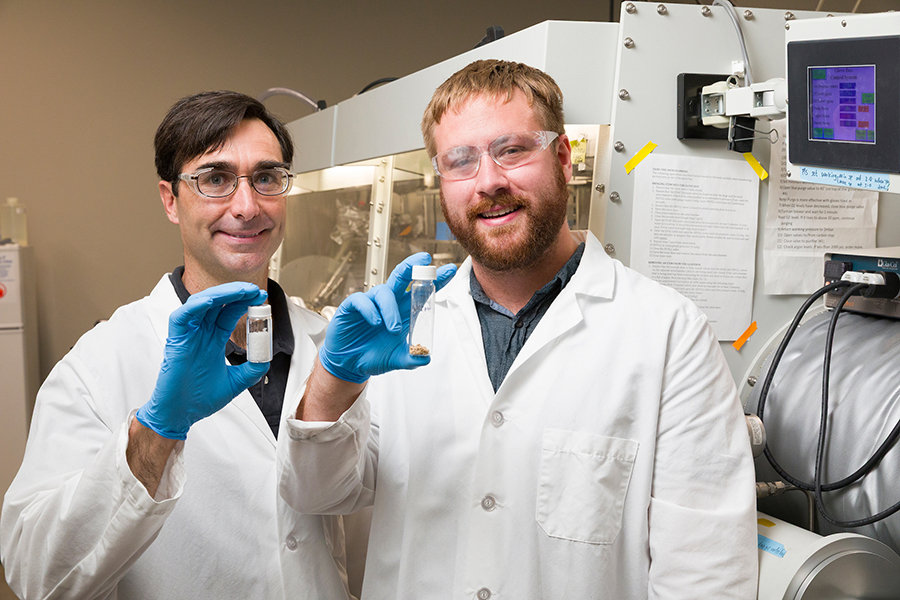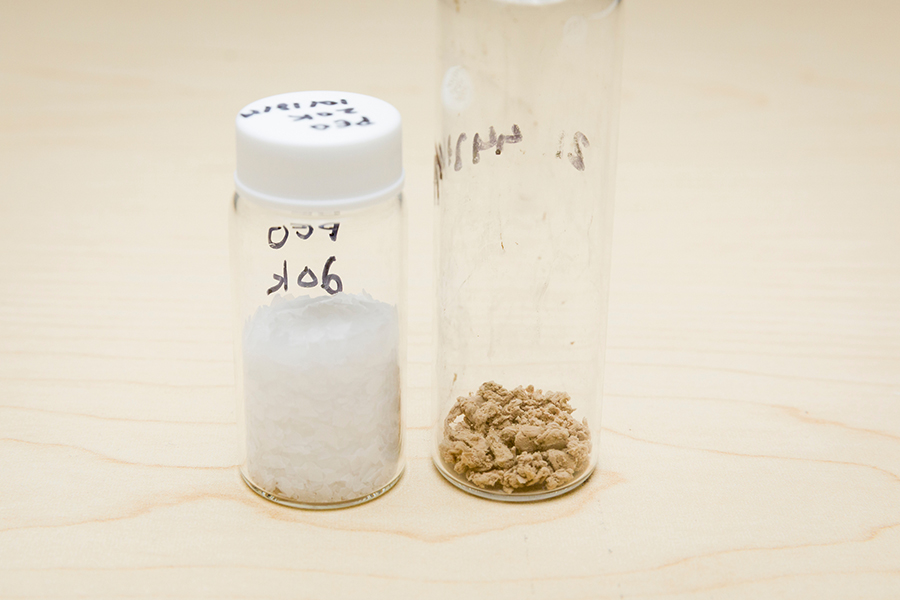The study validates a model predicting how these materials mix and could help develop safer batteries

A new study led by FAMU-FSU College of Engineering researchers investigating precision polymer blends revealed critical insights that could accelerate the development of advanced materials for batteries, membranes and energy storage systems.
The research, which focused on blends of a polymer called polyethylene oxide (PEO) and a charged polymer known as p5, found that even small amounts of charge can dramatically alter how these materials mix. This behavior aligns with previously developed theoretical models, offering a new framework for anticipating when polymer blends will remain uniform or separate into distinct phases.
The work was published in the American Chemical Society journal Macromolecules.
"Understanding how these two polymers mix is essential for designing materials that are both stable and functional," said co-author Daniel Hallinan, associate professor of Chemical and Biomedical Engineering. "Our findings show that charge concentration and electrostatic strength are key levers in tuning polymer behavior and they provide experimental evidence of something that had previously only been theorized."
WHAT THEY DID
The researchers examined mixtures with different ratios of PEO and p5 to understand how the blends behaved over a range of proportions. They found that when they created a mixture that was mostly PEO with just a little p5, the materials didn't blend smoothly and instead separated into two distinct parts. But when they added more p5, the mixtures began to form a single, uniform material.
The work validates a model that predicts how changes in the composition of these blends affect their behavior at different temperatures. The researchers pinpointed key temperature thresholds where these materials changed from solid to liquid and vice versa. By identifying the conditions under which polymer blends remain stable, scientists can more efficiently design materials for use in batteries and other applications.
"Our study validated a set of equations that predicts the behavior of polymer blends," said study co-author Michael Patrick Blatt, a former doctoral student. "This may accelerate the discovery of new electrolytes by eliminating unsuitable polymer combinations before they are synthesized or blended. This is a step toward smarter, more sustainable materials design. With better models, we can create better materials faster."

WHY IT MATTERS
The research is especially valuable for improving batteries, especially high-energy density lithium metal batteries, in which PEO and similar materials play a key role.
Solid-state batteries, which use solid materials rather than flammable liquids, offer a safer and more efficient alternative to traditional lithium-ion batteries.
"It's like moving from an oil-burning lantern to a candle," Hallinan said. "Candles are more portable and simpler in design, which is why you can still find them in almost every household in America, while very few homes have oil-burning lanterns."
Improving the materials used in lithium batteries is essential for meeting the growing demands of energy storage in modern technology. The research aims not only to make batteries safer and more efficient but also to respond to the increasing global need for better energy solutions.
"Energy storage, particularly through batteries, is a limiting factor in many technologies our society relies on today," Hallinan said. "Items like smartphones, electric vehicles, drones and space probes all depend on improved battery performance. There is a long list of technologies that would benefit from longer-lasting and safer batteries."
THE FUTURE OF BATTERIES
Battery technology is moving toward solid-state designs and away from the volatile and hazardous solvents commonly used in today's commercial batteries in favor of a combination of soft polymers and hard materials.
These composite electrolytes consist of soft polymer electrolytes, such as the blends studied in this research, and hard inorganic powders. Hallinan's lab has been collaborating with Oak Ridge National Laboratory to develop a polymer binder that can be used to create thin, flexible electrolyte membranes.
"The exciting next step is to shift from the nonconductive binder we have been using to our blend electrolyte, allowing ions to move freely through all parts of the composite," Hallinan said.
TEAMWORK AND FUNDING
The research team drew from faculty and graduate students in the FAMU-FSU College of Engineering and the FSU Department of Chemistry. Hallinan and Blatt worked with FAMU-FSU Professor Rufina Alamo, an expert in how polymers crystallize, which significantly impacts their properties. The team also included FSU Associate Professor Justin Kennemur, who developed the unique p5 polymer that helps improve the movement of lithium ions in batteries, leading to faster charging times.
This research was supported by the Department of Energy's Office of Energy Efficiency and Renewable Energy within the Vehicle Technologies Office and additional support from the National Science Foundation.






